- Home
- Kathy Reichs
The Bone Code Page 5
The Bone Code Read online
Page 5
Vislosky pulled a notebook and pen from one pocket. “Anything else?”
“Some asshole capped both of them.”
The sage eyes showed no amusement. “Race? Height? Medical history? Individual peculiarities?”
“Not at this point.”
Vislosky pocketed her pad, strode to the counter, and tossed a card on it.
“I’ll be waiting for your call.”
I watched the WNBA frame disappear through the door.
6
THURSDAY, OCTOBER 7
Klopp lasted until six. Brian and I were there past ten.
First, I did a full skeletal inventory of the older victim. Next, I took measurements and ran them through the Fordisc 3.1 computer program that classifies adults by ancestry and sex. Then I calculated height.
Morphoscopics and metrics completed, I shot video and made casts of the bullet entrance and exit wounds. That finished, I did the same with the truncated end of each phalange. Finally, I examined every millimeter of every bone with my naked eye and under magnification.
Brian captured stills as I worked. And assisted in collecting samples for possible DNA and radioisotope testing. He also finished sifting through the muck and bagging every item that came from the container. As I was completing my notes on AF21-986, he made a stealth run to the food trucks. I’m not sure what we ate.
After dinner, I repeated the process for the younger victim.
I noticed the time as we were rolling the gurneys from the elevator back into the morgue cooler: 10:29 p.m.
And the fact that Ryan had called. More than once. No voice mail.
Anne was still awake when I got to the IOP beach house, sipping a chardonnay while viewing an old episode of Bones on an iPad she’d plugged into a portable charger. By candlelight.
“Hey, girlfriend. Join me.” Patting the sofa. “I’m watching the one where they find a body squashed behind the gym bleachers.”
“That’s the last thing I want to see.”
“Right.” Then, tapping the bricklike object tethered to her tablet, “Pretty cool, eh? My Zeus portable jump starter and USB charger.”
“You bought that?” Stunned that such a thing remained available for purchase.
“No. TT reminded me it was here.”
“Doesn’t this house have a backup generator?”
“It does. I sort of forgot to schedule a gas fill-up. They’re coming tomorrow. Can I make you a snack?”
“I already ate.”
“What?”
“Maybe chili.”
“Was today just too ghastly?”
I shrugged.
“Might help to talk about it.”
“I just want to shower and turn in.”
“Why don’t you do your toilette while I make us some nice chamomile tea?” Anne, undeterred. “It will help you relax.”
“OK.” Resolved not to discuss my day. “Tea sounds nice.”
The shower was quick. And tepid at best. Ten minutes later, I was back in the living room, smelling and feeling considerably better.
My resolve lasted about five minutes.
“Two girls. My gut says one was around fifteen, the other closer to twenty. Each killed with a single shot to the back of the head.”
“Crapsticks.”
“Big ones.” Sipping my herbal brew. “How did you boil the water?”
“Put the kettle on the grill.”
“Genius.”
“Do you still see a link to your Canada case?”
“One of the Montreal victims was in her thirties, the other was around nine or ten. Here they were both in their teens.”
“And yet?”
“A medical waste container dumped into the ocean. Bodies wrapped in plastic sheeting and secured with wire. Two female victims. A single bullet to the brain. Severed fingers and smashed teeth.”
“That’s a shit ton of coincidence.”
“It is.”
Anne thought about that a long time. Then, “Why do you suppose that case went cold?”
“Duh. We never ID’d the vics.” A little too sharp.
“But why?”
A question I’d wrestled with repeatedly over the years. Why hadn’t we?
“Back then was a raucous time for Montreal law enforcement.”
“That whole Quebec separation thing?”
I shook my head. “La guerre des motards.”
Anne raised one brow.
“The biker war.”
“What bikers?”
“Motorcycle gangs. Beginning in the mid-nineties, the Hells Angels and some local talent called the Rock Machine began slugging it out over control of the Quebec drug trade. From then until around 2002, it was unbridled killing and bombing on both sides.”
“How did it end?”
“In March 2001, a joint effort by the Mounties, the Ontario provincial force, the Sûreté du Québec, and the Montreal police resulted in the arrests of Angels all over Canada. Something like one hundred thirty-eight in Quebec alone, another fifty-one in Calgary.”
“Good score.”
“It was. But the violence didn’t stop with that. In 2006, the Bandidos, then the only possible rivals to what remained of the Angels, self-destructed with the killing of eight of their own members in Ontario. The media dubbed it the Shedden massacre.”
“Judas on a trampoline. Sounds like a wild ride back then.”
“It was. And a lot of the bodies ended up in my lab.”
“What does all this have to do with your container case?”
“Maybe a lot. The container washed ashore in 2006, not long after the Shedden massacre. That same week, a man was shot to death shortly after his release from prison. His body was found in a burning car not far from the site where the container turned up. The guy was some gang wannabe, and torching a vehicle was a common biker MO, so it was assumed to be an Angels or Bandidos hit.”
“Which generated fear that the war was about to reignite.”
“Exactly.”
“So that investigation got more attention than your container case.”
“That’s an understatement. Everyone was focused on it. The Ontario and Quebec provincial police, the Montreal city PD, what remained of the task forces. And the slaughter of the Bandidos was all anyone was talking about. Other than Ryan, myself, and his small group at Crimes contre la Personne, no one was interested in old bones washed up from the St. Lawrence. Our case was largely neglected.”
Birdie chose that moment to make his entrance. Hopping onto the sofa, he stretched full length between us.
“Also, all the separate investigations created a lot of false leads,” I said. “Which led to loss of time and waste of resources.”
“That must have been frustrating.”
“It truly sucked. Besides those committed by these asshole bikers, murders weren’t that common in Montreal. Our investigation should have been given high priority. But it wasn’t. And we never ID’d our vics, a woman and a child. Which meant we could never narrow our focus.”
“So the case went cold.”
“As an Arctic stream.”
Birdie rolled to his back. I started stroking his belly. He began purring like mad.
A few moments passed.
“What happened with the guy in the burning car?” Anne asked.
“I don’t think the investigation went anywhere. After I examined the remains, I gave my report to the pathologist and to some detective. Ryan didn’t catch that case. I was totally focused on the container vics, so I made no effort to follow up.”
“If someone was charged, wouldn’t you have heard? Or gotten a subpoena or something?”
“Possibly.” I made a mental note to ask Ryan.
Anne reached out to pet the cat. He didn’t recoil, but he didn’t exactly melt to her touch.
“So.” Anne picked up the thread. “You had no dentals and no prints on your container corpses. And you were unable to get DNA.”
“We tri
ed but failed to extract enough for sequencing. The bones were pretty degraded.”
Anne was quiet for a very long time.
Then she made a startling suggestion.
7
THURSDAY, OCTOBER 7–FRIDAY, OCTOBER 8
Up in my room, I opened the sliding glass door leading onto the balcony. The tide was out, and far across the beach, the ocean drummed its sibilant beat. The smell of salt air, seaweed, and wet sand, normally soothing, conjured images of a barrel and algae-coated bones.
And of something else.
A ring set with an emerald too garishly large to be real. Worthless. Except to a child who saw beauty in the gaudy stone and the peeling silver paint.
Though I’ll never know for sure, I picture the little girl, desperate, slipping her treasure into the only hiding place available to her. On her knees, a gun barrel pressed to her head.
When I found the plastic bauble wedged in what was once the tiny esophagus, my heart stopped, and a burning desire consumed me. I will avenge you, I’d whispered to the dead child. I will bring you down, I’d whispered to her killer.
That awful moment lies perpetually curled in some dark corner of my mind. Over the years, I’ve learned to keep the memory in its lair. But, when goaded, the image slinks free, sharp and clear as a high-def print.
As does my obsession with motive. Unlike with other crimes, the reason for murder is often unclear. Jealousy? Passion? Revenge? Financial gain?
But a woman and a child? Had the killer’s victims witnessed something that threatened him? Refused a demand? For money? For information? Did the killer promise to shoot the child if the woman didn’t comply? Did the child die first, the woman begging for mercy? Did the woman die first, the child watching in terror?
Stop!
Forcing my head clear, I dropped onto the bed and propped myself up with pillows. After calculating the hour in the Northwest Territories, I phoned Ryan. He answered right away.
“Bonjour, ma chère.”
“Hey.”
“I called several times, but you didn’t pick up.” A note of annoyance?
“Sorry. I spent the day in a morgue.”
Ryan either missed that or chose to ignore it. “Where are you now?”
“At IOP. With Anne.”
Silence.
“Anne Turnip?” I prompted. “My forever best friend?”
“The one with the legs tha—”
“Yes. She had some damage to her beach house and asked for my help.”
“Anything major?”
“No. The storm hit pretty far south of Charleston, not a biggie, then moved offshore.”
“Is the annex OK?”
“Unscathed. Still enjoying Yellowknife?”
“I discovered a place called Bullocks Bistro. It’s on Ragged Ass Road. I may move here.”
“Hm.”
“There’s a polar bear in the airport terminal.”
“Alive?”
“Stuffed.”
“Probably died waiting for baggage.”
“It’s Yellowknife.”
I stifled a yawn.
“Am I keeping you up?” Ryan asked.
“Not very well. It was a long day.”
“Spent in a morgue.”
I should have known. Ryan misses nothing. I told him the whole story: the container, the wrappings, the vics, the severed fingers, the gunshot wounds to the head. He listened without interrupting.
There was a pause when I’d finished. Then Ryan said, sounding more cop than lover, “You’re thinking about the case back in 2006.”
“Yes.” Suddenly wide awake. “You see the parallels, too?”
“Could be coincidence.”
“My gut’s telling me different.”
“South Carolina is a long way from Quebec.” Precisely the same reaction as Anne.
“Those vics never got the attention they deserved.”
“Whoa.”
“Not because of you, of course.” Jesus. Fatigue was making me say all the wrong things. “Your team did everything possible. But coming on the heels of the Shedden massacre and the guy found torched in his car, everyone was freaked by a potential flare-up with the Angels.”
“Some of the higher-ups thought the container murders might be gang-related,” Ryan said.
“A woman and a child?”
“You’re right. Not a biker MO.”
“But the biker war was just so much sexier than old bones in a barrel.”
“Not as sexy as you.” Definitely not cop-speak. “When do you return to Montreal?”
“Two weeks. Listen, will you do me a huge favor?”
“There might be a quid pro quo involved. You know that thing you do with your—”
“Could you pull the case file? Send me anything you find?”
“I’ll do what I can.” Sounding far from confident. “It’s been fifteen years.”
“Thanks.”
“What are you thinking?”
I told him about Anne’s suggestion.
“That’s a long shot,” he said.
“From here to Pictor and back.”
“Pictor?”
“The constellation where that kid discovered the new exoplanet.”
* * *
The power returned sometime during the night. I awoke to the piercing whine of a chain saw. Merely the opening volley.
By nine, the house and grounds were crawling with workers. A solo carpenter was reconstructing the front porch. Another pair was hammering shingles onto the roof. A team was pumping sludge from the pool on the back deck. A guy was trimming palms and bundling fronds in front.
I’d just finished brewing coffee when Herrin called. I went through my notes. The coroner thanked me, then asked that I brief Vislosky. I agreed.
Instead of phoning, I decided to update her in person. Any excuse to escape the chaos.
Charleston’s blue-blood and lace-curtain side of the tracks is a petal-shaped hunk of land carved from the Atlantic by two rivers, the Cooper on the east and the Ashley on the west. Particularly coveted is a hive of narrow, tree-lined streets at the petal’s southern tip. Though far from a majority these days, many residents of this area, known as South of Broad, or SOB, claim ancestry back to the plantation culture before the Civil War.
I wound my way from IOP to Sullivan’s Island, through Mount Pleasant, over the Cooper River Bridge and across the petal to 180 Lockwood Boulevard. Though close geographically, the address is centuries removed from the quaint shops, horse-drawn carriages, and narrow street-facing Georgians of SOB. Parking is adequate, though. A nice contrast.
The Chief Reuben M. Greenberg Municipal Complex houses the courthouse, the municipal court operations offices, the department of traffic and transportation, and a DMV office. Behind the Greenberg is the much larger Chief John Conroy Law Enforcement Center, home to the Charleston Police Department.
Looking at CPD main, I suspected a similar architectural hand had been at work to that at the MUSC hospital complex. Same functional but uninspiring square lines and miles of red brick and glass. Same palms growing in orderly rows never present in nature.
Across Lockwood stretched Brittlebank Park, a swath of green space fronting the Ashley River. To the northwest was the RiverDogs stadium, home to the Yankees’ A-level minor league team. To the southeast, the College of Charleston and a Marriot hotel. Only a few blocks distant was the building in which I’d toiled the previous day. And the scraggy stretch of shoreline where the container had beached itself.
Before leaving my car, I pulled Vislosky’s card from my purse. She was assigned to the violent-crimes division. No shocker there.
I dialed. Vislosky answered and told me to come in.
I crossed the lot, climbed the steps, and entered CPD headquarters. The lobby was standard-issue. Scuffed tile. Wooden doors. Floor-bolted seating. Glass-fronted cases displaying trophies and photos of the department’s outstanding performers.
And an item that c
aused me to halt for a moment.
Beside one pillar stood a bright red container provided by the CVS pharmacy chain. Lettering on its front explained the container’s purpose: Medical Disposal. After snapping a photo with my phone, I crossed to reception and spoke to the duty officer. He asked for ID. I held my driver’s license to the glass. He eyed it, then called upstairs.
Moments later, the elevator arrived. Vislosky was in it. Today’s blazer was charcoal, the pants pale gray. Vislosky’s glossy black hair haloed her head in short, tight curls.
We rode in silence, both focused on the digits lighting up then going dark. Now and then, I sneaked a sideways peek. Vislosky had at least five inches on me. Her stance, feet spread, body tense, suggested a perpetual preference for fight over flight.
When the doors opened, she led me down a corridor to a squad room that, like the lobby, offered no surprises. Cinder-block walls held city, state, and U.S. flags. Between them, bulletin boards were layered with photos, flyers, wanted notices, and takeout menus.
Vislosky’s desk was in a far corner. B+ for neatness.
Ankle-hooking a chair from an absent neighbor, Vislosky gestured me to it. Seated on the opposite side of her desk, she asked, “Whatcha got?”
“It’s nice to see you, too, detective.” As I dug out my notes.
No smile from Vislosky.
“Two females. One fifteen to seventeen, one eighteen to twenty, but I wouldn’t rule out someone as old as twenty-two. Both Caucasoid.”
“White.” Grabbing pen and paper.
“Yes. The younger was sixty-one to sixty-two inches tall, the older sixty-eight to seventy inches.”
“Weight? Body build?”
“No can do,” I said. “Except to say that the younger one was probably slight.”
Vislosky raised her brows.
“Small muscle attachment points.”
“Go on.” Eyes on the paper.
“The younger girl suffered a lateral condylar fracture of the right humerus, probably nine months to a year before her death.” When Vislosky looked up, I indicated a bony prominence on the outer part of my elbow. “The break healed well with no distortion, suggesting she was seen by a doctor, probably wore a cast for a few weeks.”
“What causes that type of injury?”
“Kids fall.”

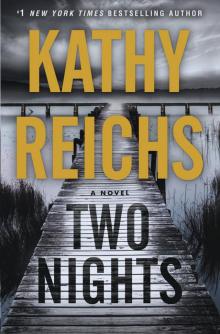 Two Nights
Two Nights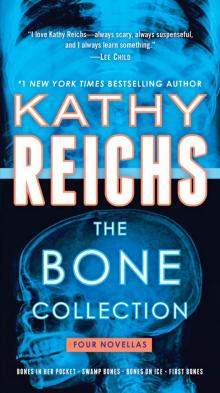 The Bone Collection: Four Novellas
The Bone Collection: Four Novellas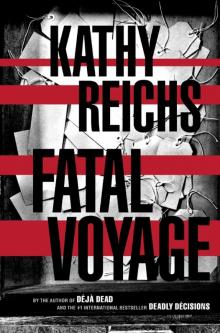 Fatal Voyage
Fatal Voyage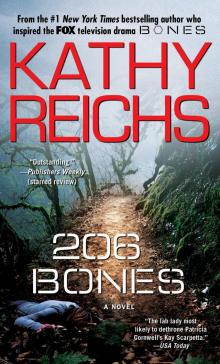 206 Bones
206 Bones Bones to Ashes
Bones to Ashes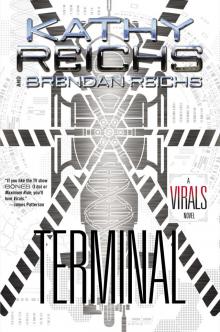 Terminal
Terminal Monday Mourning
Monday Mourning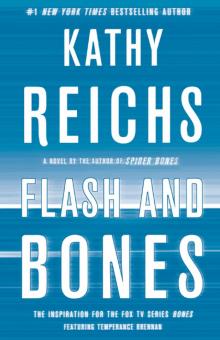 Flash and Bones
Flash and Bones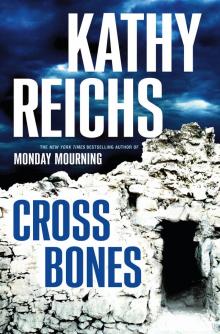 Cross Bones
Cross Bones Devil Bones
Devil Bones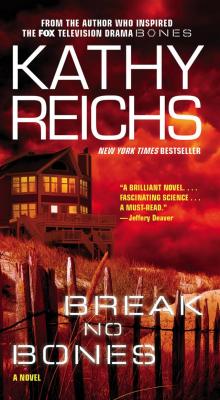 Break No Bones
Break No Bones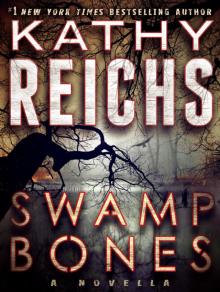 Swamp Bones
Swamp Bones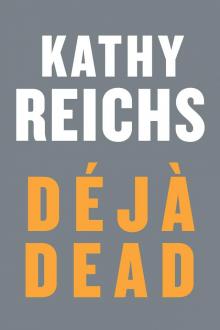 Déjà Dead
Déjà Dead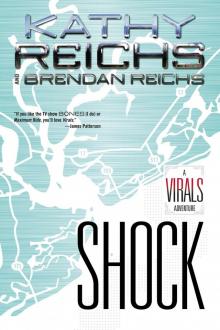 Shock
Shock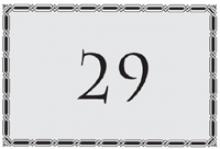 Spider Bones
Spider Bones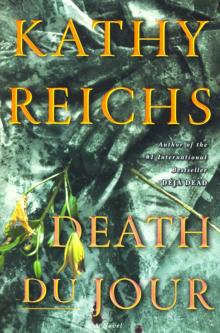 Death Du Jour
Death Du Jour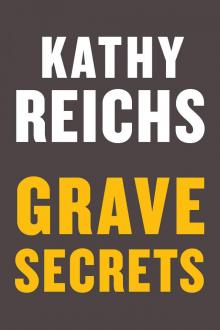 Grave Secrets
Grave Secrets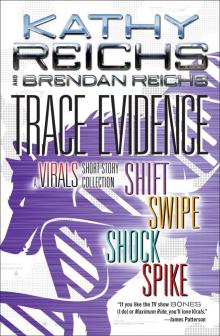 Trace Evidence: A Virals Short Story Collection
Trace Evidence: A Virals Short Story Collection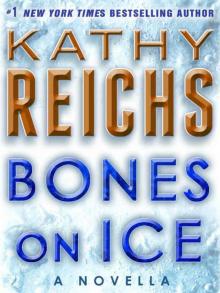 Bones on Ice
Bones on Ice The Bone Code
The Bone Code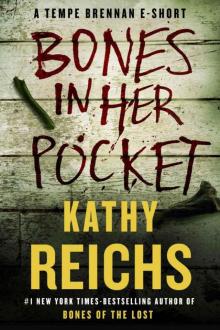 Bones in Her Pocket
Bones in Her Pocket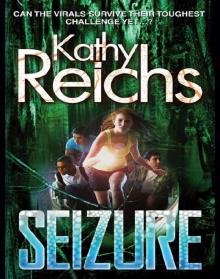 Seizure:
Seizure: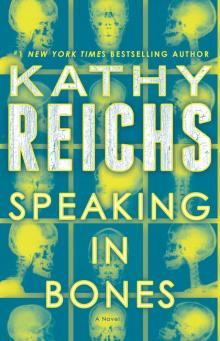 Speaking in Bones
Speaking in Bones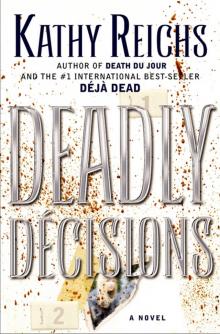 Deadly Decisions
Deadly Decisions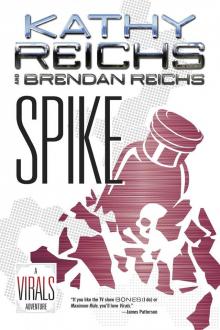 Spike
Spike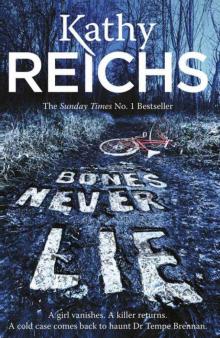 Bones Never Lie
Bones Never Lie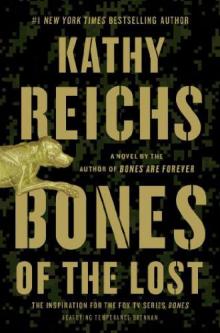 Bones of the Lost
Bones of the Lost Virals 03.5 - Swipe
Virals 03.5 - Swipe Exposure
Exposure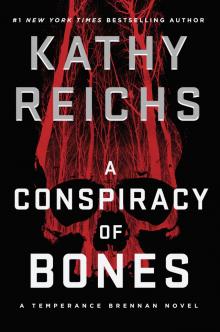 A Conspiracy of Bones
A Conspiracy of Bones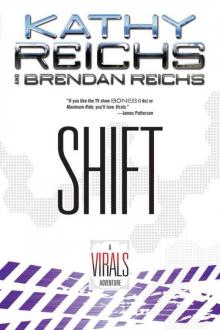 Shift (tory brennan)
Shift (tory brennan)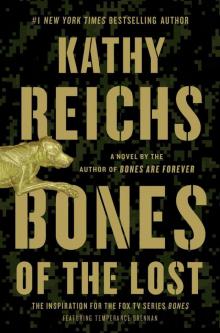 Bones of the Lost: A Temperance Brennan Novel tb-16
Bones of the Lost: A Temperance Brennan Novel tb-16 Virals tb-1
Virals tb-1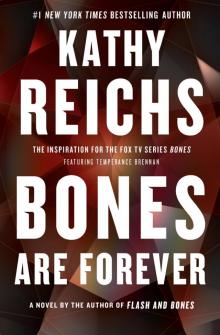 Bones Are Forever tb-15
Bones Are Forever tb-15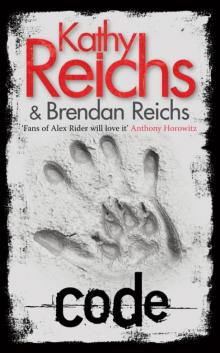 Code tb-3
Code tb-3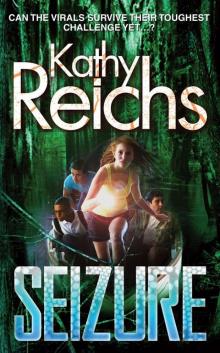 Seizure tb-2
Seizure tb-2 Deadly Descisions
Deadly Descisions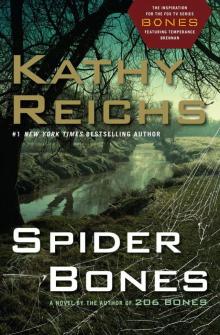 Spider Bones: A Novel
Spider Bones: A Novel